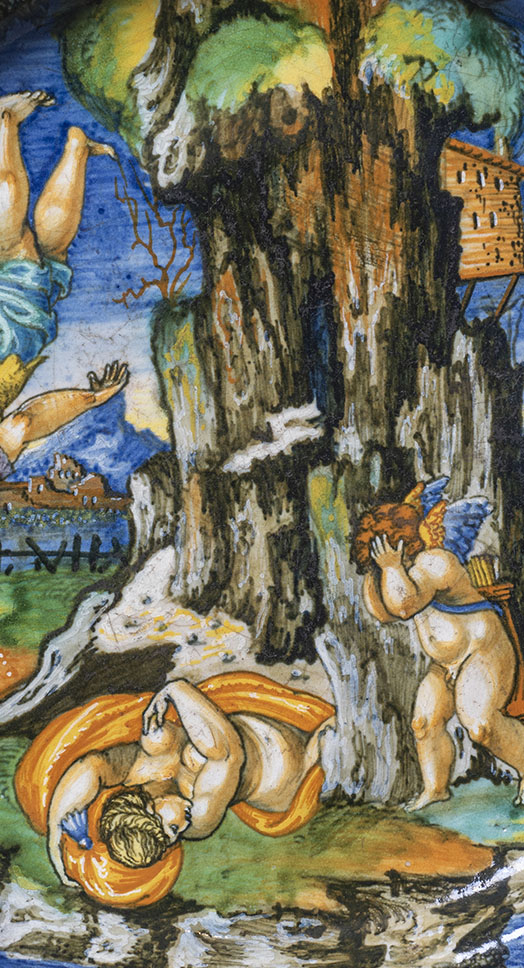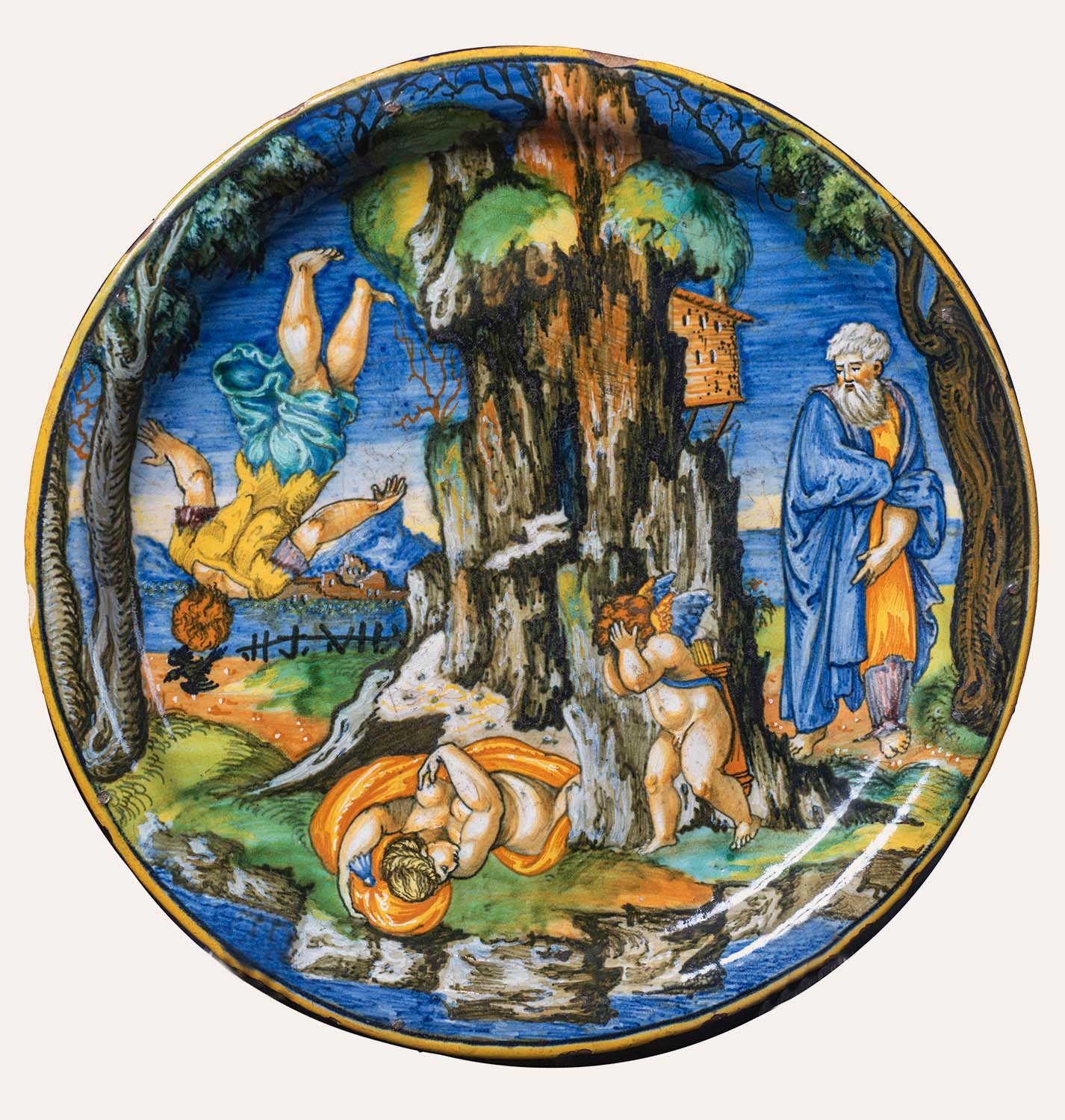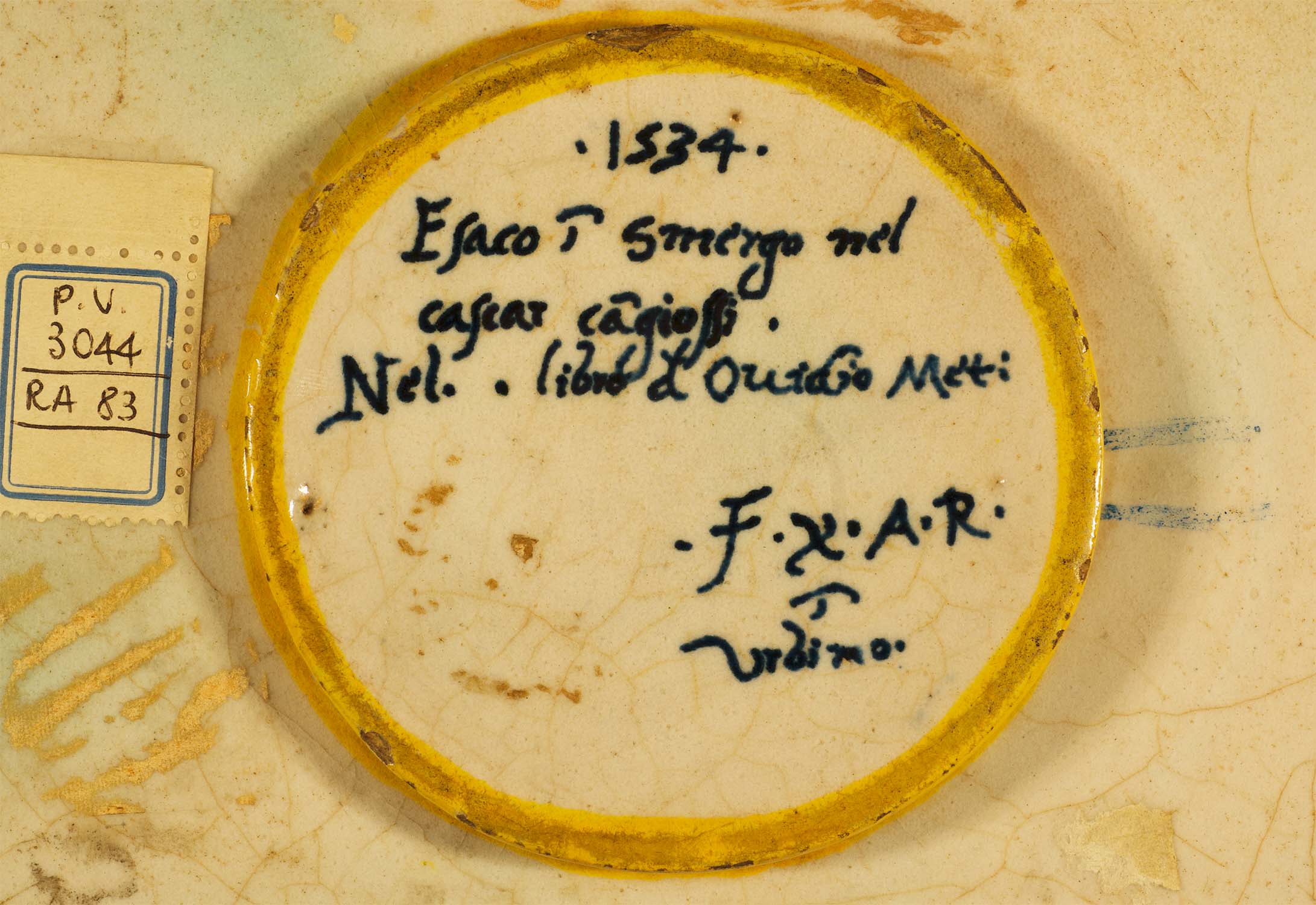The Renaissance through the lens of maiolica pottery made by a 16th-century Urbino maestro, at the head of a flourishing atelier

The work, exhibited in the Palazzetto, is made in painted majolica and bears the inscription “1534. ESACO IN SMERGO NEL CASCAR CANGIOSSI. NEL LIBRO D’OVIDIO MET: F.X.A.R. IN URBINO”. The initials ‘F.X.A.R.’ can reasonably be understood as Francesco Xanto, or Santo, Avelli (1486- 1545), one of the greatest High Renaissance ceramicists in Urbino.

The subject matter reflects the noted literary qualities of Avelli, active as a humanist and poet at the court of the Duke of Urbino Francesco Maria della Rovere (1490-1538). Aesacus, according to the mythological story reported by the Latin poet Ovid, was the oldest son of King Priam of Troy. In the Metamorphosis, he falls in love with a nymph named Hesperia. When he pursues her, however, the nymph flees and is bitten by a poisonous snake and dies. Inconsolable, Aesacus tries to commit suicide by throwing himself off a cliff into the sea. But the goddess Tethys has pity on him and turns him into a diving bird (a merganser).

To be used as a purely decorative object, i.e., to be hung on a wall, or simply to embellish a room, the dish became part of the collection in 1921, coming from the antiques gallery of Giuseppe Sangiorgi.